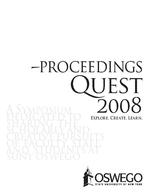|
|

Notes
- Abstract:
- Detailed bedrock joint patterns were studied in two parts of NY, integrating outcrop data and analysis of high-resolution images obtained through the NYS GIS Clearinghouse and supported by The Institute for the Application of Geospatial Technology, and the NY Geological Survey. The areas examined include the Hudson Highlands, Orange Co. and the shore line of Lake Ontario, Oswego Co. Low water level on Lake Ontario provided access to outcrops of the Ordovician Oswego Fm that would normally be covered. Most outcrops include two subvertical fracture sets. The oldest strikes NW, and fresh surfaces contain plumose structure typical of Mode I joints. A second set, strikes ENE and has a variety of morphologies including sinistral en-echelon zones and fracture zones with microgouge. The first set is often displaced across the second with a sinistral shear sense. High-resolution images of Lake Ontario reveal a detailed pattern of fracture density that was compared with the outcrop data. The digital images were spatially analyzed and lineament maps were produced. Master joints that appear in the images were then confirmed at places where they come ashore, and many were mapped beyond the extent of the image using a small motor boat with GPS. The image data was sorted by length and strike, and consistently shows that the second set dominates this region. The western region of the Hudson Highlands is underlain by Proterozoic crystalline rocks and was mapped over the past decade including fracture analysis to compile maps at the scale of 1:24,000. Within Harriman and Sterling Forest St Parks, there are extensive bedrock outcrops with minimal cover, therefore, high-resolution images were used to augment the field analysis. The Kanawauke fault traces ENE across the Hudson Highlands, crosscuts the Proterozoic structures, and has dextrally offset various units. There are two dominant subvertical fracture sets. One set occurs at almost every outcrop and strikes NW, but the second appears to be more regionally restricted to ENE striking faults. Again, digital images of outcrops near the KF were spatially analyzed to produce high-resolution fracture trace and fracture density maps. As anticipated, the fracture density of the second set increases in rocks adjacent to the fault. With this study, it was demonstrated that field data could be integrated with available image data with overall positive results.
- General Note:
- Quest 2008 Best Paper
- General Note:
- Submitted by Shannon Pritting (pritting@oswego.edu) on 2008-10-24.
- General Note:
- Made available in DSpace on 2008-10-24T20:31:33Z (GMT).
Record Information
- Source Institution:
- SUNY Oswego
- Holding Location:
- SUNY Oswego
- Rights Management:
- All applicable rights reserved by the source institution and holding location.
|
|